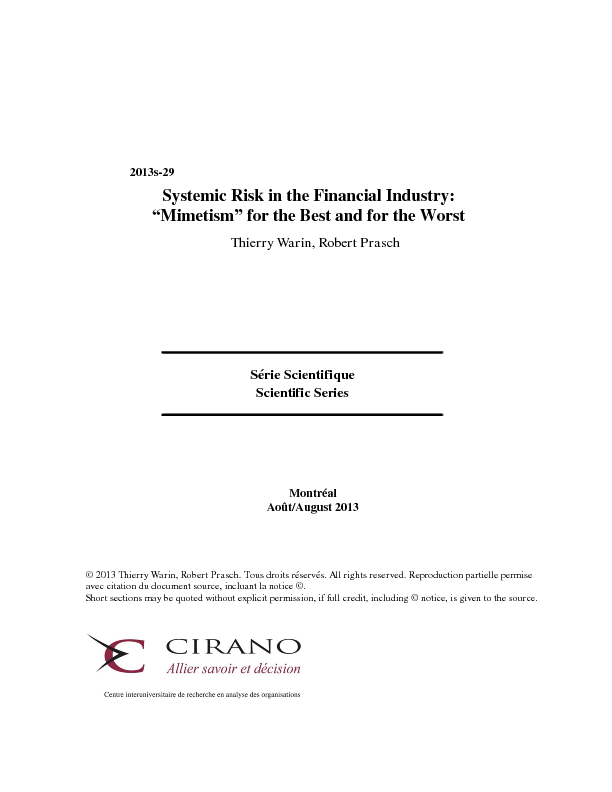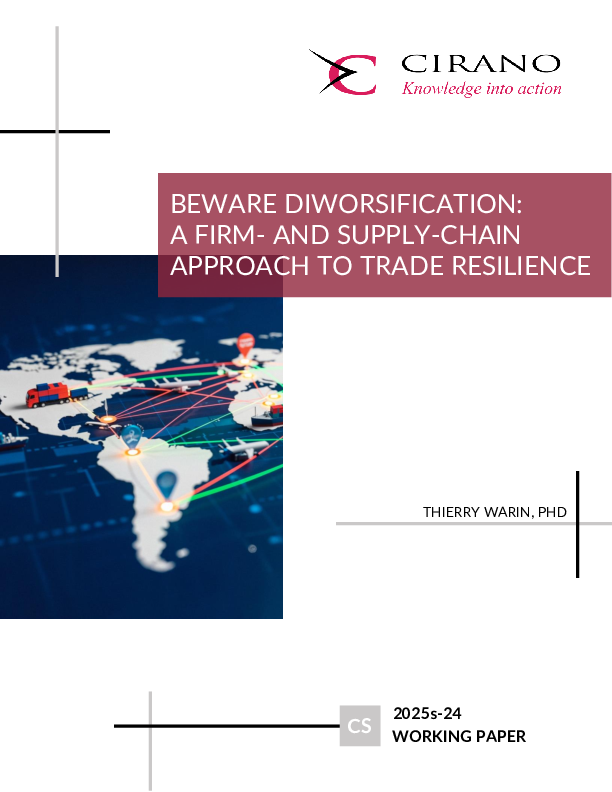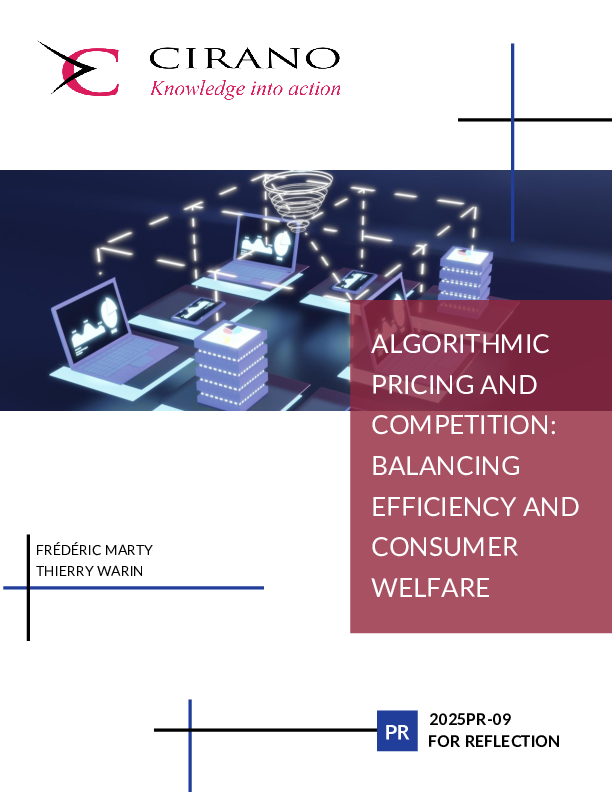Systemic Risk in the Financial Industry: “Mimetism” for the Best and for the Worst
In the wake of the worst financial crisis since 1929, economists are revisiting the received understanding of how financial markets and institutions actually operate. This paper aims to contribute to this reexamination. It builds upon the traditional and widely-accepted mean-variance approach to the processing of information under conditions of risk while reconsidering an inadequately contemplated premise: the actual organization of the financial market. Now, a lot has been said about perverse incentives and contracting arrangements, firms with oligopolistic power, the pricing and market advantages of being too big to fail, and the associated inefficiencies of the regulatory and supervision systems. While we believe that much of that work is valid, we also believe that too little has been done to meld modern portfolio theory (MPT) with insights that can be drawn from recent developments in Industrial Organization. In the model presented here, the MPT finds its place through the "coordination"" mechanism, which is the transmission of financial information among agents. The IO perspective finds its place in our model through a variable capturing the fragility of the system: the probability that the quality of information can itself be altered by the system's ""complexity,"" which in its extreme from can be described as ""opacity."""
[ - ]




